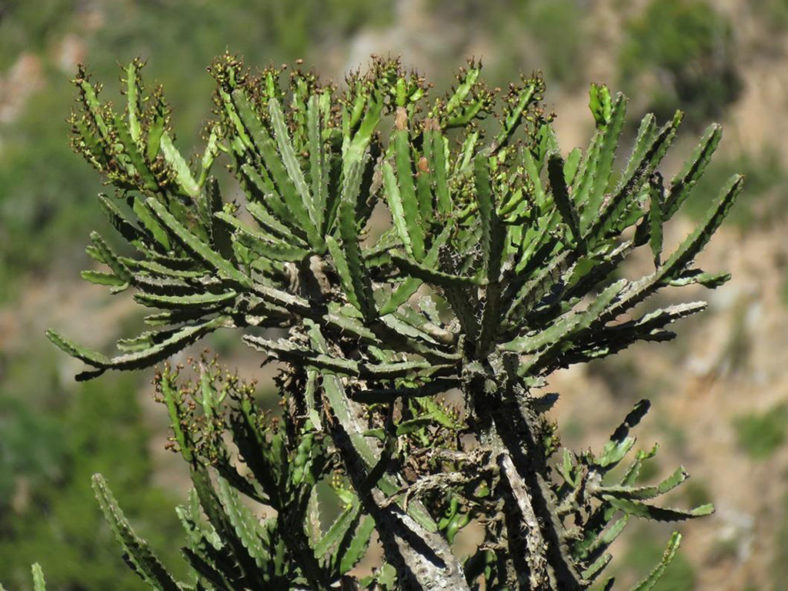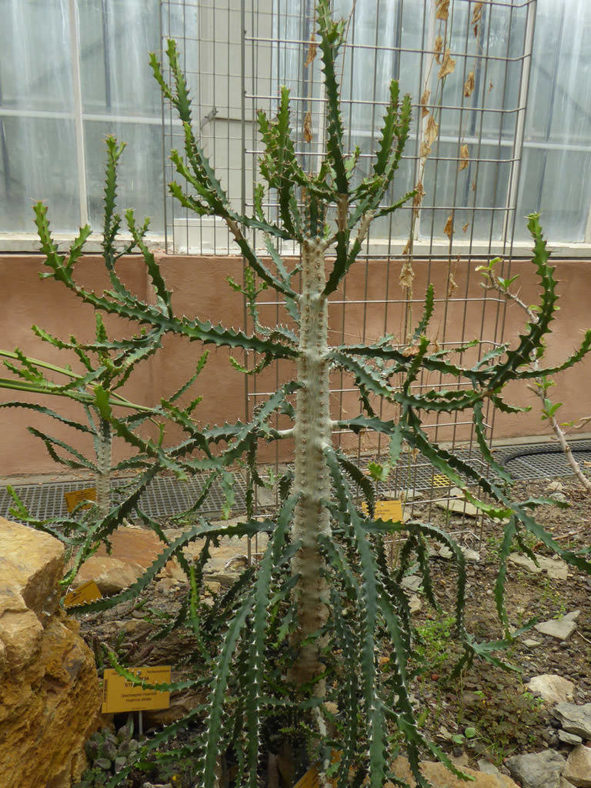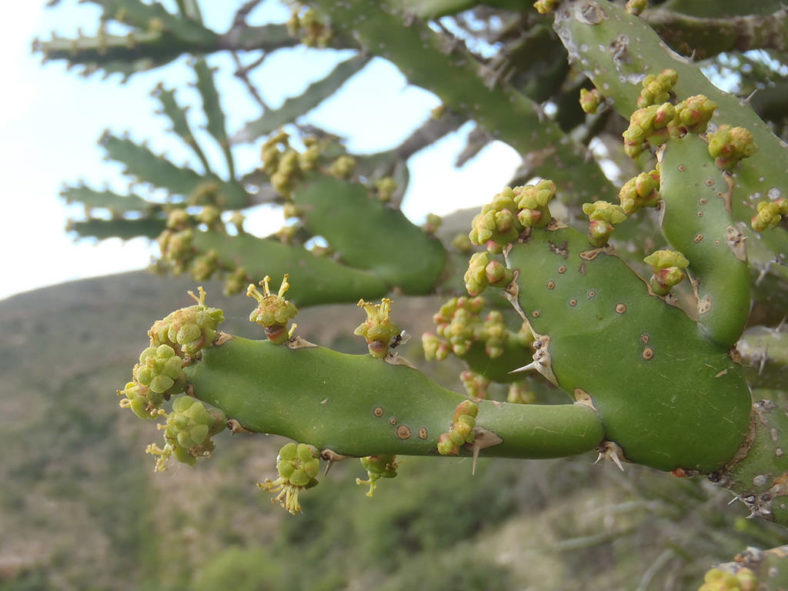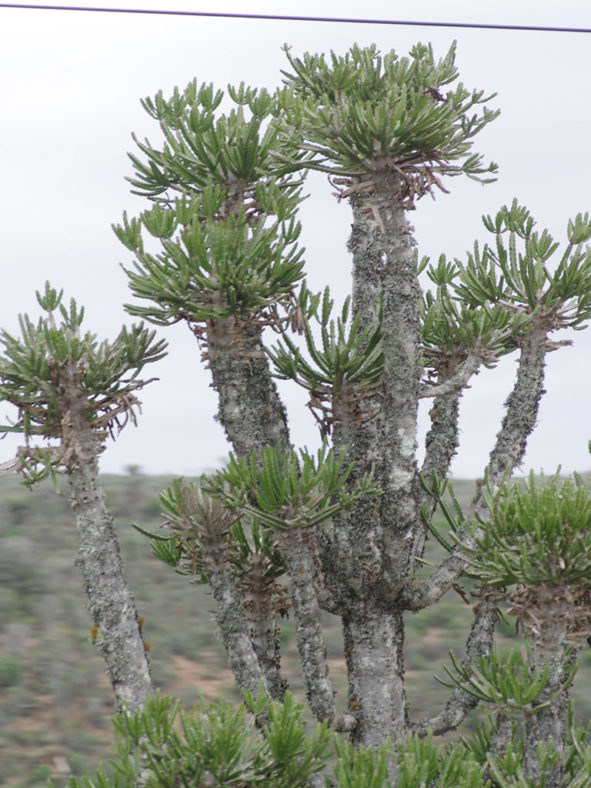Scientific Name
Euphorbia grandidens Haw.
Common Name(s)
Big-Tooth Euphorbia, Large-toothed Euphorbia, Largetooth Euphorbia, Lowveld Euphorbia, Lowveld Naboom, Tree Euphorbia, Valleybush Euphorbia, Valleybush Naboom, Valley Naboom
Synonym(s)
Euphorbia arborescens, Euphorbia evansii, Euphorbia magnidens
Scientific Classification
Family: Euphorbiaceae
Subfamily: Euphorbioideae
Tribe: Euphorbieae
Subtribe: Euphorbiinae
Genus: Euphorbia
Etymology
The specific epithet "grandidens (GRAN-di-denz)" means "large-toothed" and refers to the teeth along the angles of the branches.
Origin
Euphorbia grandidens is native to South Africa, Botswana, Lesotho, Namibia, and Swaziland, where it usually grows on rocky outcrops or steep slopes in dense valley bushveld.
Description
Euphorbia grandidens is a spiny succulent tree with one or several cylindrical trunks and ascending branches that bear an apical whorl of green, 2- to 4-angled, deciduous branchlets. It can grow up to 52.5 feet (16 m) tall. The branchlets can reach up to 0.8 inches (2 cm) in width and have large teeth and short but very sharp spines along the angles. The tiny leaves are scale-like and deciduous.
The flowers are pale yellow and appear along the angles of the branchlets in spring. The fruits are 3-lobed mauve to red-brown capsules that can grow 0.6 inches (1.5 cm) in diameter.

How to Grow and Care for Euphorbia grandidens
Light: This succulent is a sun lover. Place your indoor E. grandidens in a sunny window. You may place the pot on the balcony or in the garden from spring to fall. Increase sun exposure gradually to prevent sunburn.
Soil: E. grandidens requires well-drained soil. Use a commercial mixture formulated for succulents, or make your own potting mix.
Hardiness: High summer temperatures are not a problem, but low winter temperatures can damage or kill your plant. E. grandidens can withstand temperatures as low as 25 to 50 °F (-3.9 to 10 °C), USDA hardiness zones 9b to 11b.
Watering: From spring to fall, water when the top inch (2.5 cm) of soil feels dry. Reduce watering in winter. Give it just enough water to prevent wilting. The best time of the day to water your E. grandidens in the warm season is the evening.
Fertilizing: Plants in a pot need regular feeding. Apply a balanced fertilizer in a 10-10-10 NPK formulation, diluted to 1/4 strength weekly during the growing season.
Repotting: E. grandidens will benefit from repotting, but it does not need to be repotted every year. When your plant is outgrowing its pot, it is time to repot it in a larger pot and give it a fresh potting mix. The repotting is best done in early spring, at the beginning of the growing season. Wear gloves, protective clothing, and appropriate eye protection when repotting this succulent.
Propagation: The easiest and fastest method of propagation for this plant is by using cuttings. It can also be grown from seeds but can be difficult to germinate. The best time to take cuttings is in spring or summer. Sow the seeds in spring.
Learn more at How to Grow and Care for Euphorbia.
Toxicity of Euphorbia grandidens
E. grandidens produces a toxic white milky sap that can irritate the skin and eyes. It is best to keep your plant away from children and pets.
Links
- Back to genus Euphorbia
- Succupedia: Browse succulents by Scientific Name, Common Name, Genus, Family, USDA Hardiness Zone, Origin, or cacti by Genus
Photo Gallery
Click on a photo to see a larger version.


